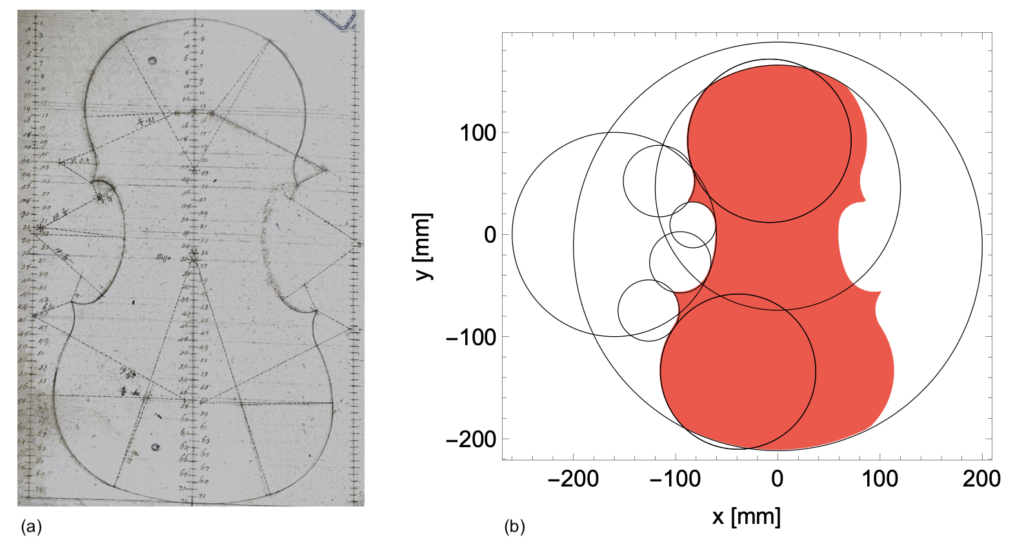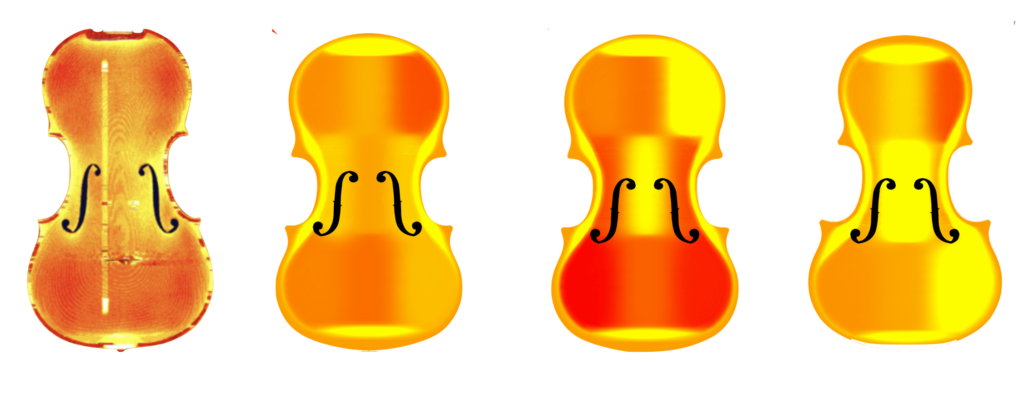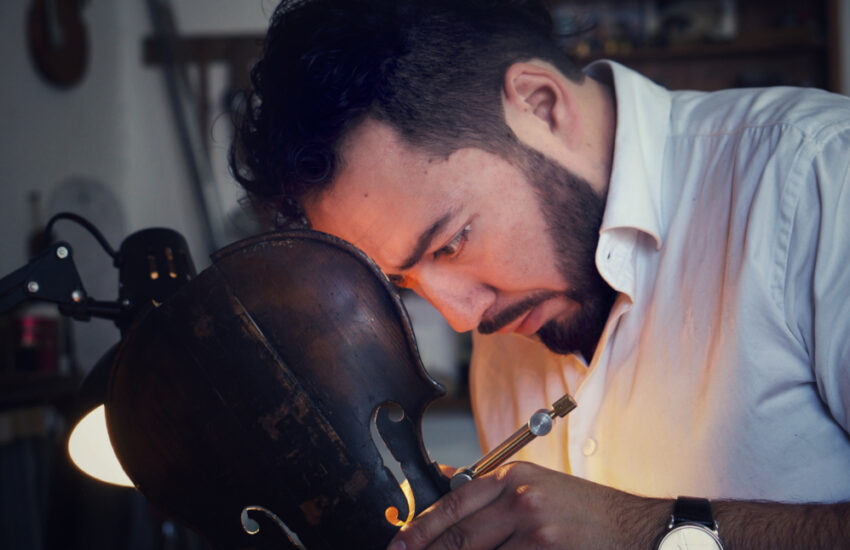How can you predict the sound that a piece of wood will make once it has been transformed into the top plate of a violin? What shape would give it the best sound? Artificial intelligence has all the answers. A study has shown how artificial intelligence, the physical simulation and craftsmanship can come together to shed light on the art of making stringed instruments. Sebastian Gonzalez talks to us about it and tells us his story and how he came to find the perfect synthesis between his studies into physics and violin making.
Sebastian, how did you learn about the city of violins?
I moved to Cremona in November 2019. About a year before that, I had visited this city for the Mondo Musica fair and discovered the Musical Acoustic Lab, inside the Violin Museum in Cremona. After having knocked on the door and asked if I could take a tour of the museum, I said to myself: “I would really like to work here!”
A dream that then came true?
At the time I had just finished my second post doc in Chile, studying active colloids and dividing my time between my guitar lab and my data analysis scientific work. I would never have thought it possible for me to unite my training as a physicist with my love for building instruments.
How did this hobby of yours happen?
Just before I completed my post doc, in 2013 I met my first wife’s family. They have been luthiers for thirteen generations. Originally from Markneukirchen, which you could say is a German Cremona, Opa, my mother-in-law’s father, had left the DDR in the sixties and moved to Celle, in Low Saxony, where he specialised in Baroque instruments.
I first visited his workshop on an October afternoon, as the daylight was dwindling. I was enveloped by the smell of propolis, sandarac, shellac, and old wood. I stood open-mouthed, looking at these amazingly beautiful instruments hanging on the walls and in the cupboards. You could feel their history, hand-made using just a few craft tools and the knowhow handed down from master to apprentice over 300 years.
This was exactly my idea of Europe and what I appreciated about it. Stonemasons from the South of France, Flemish goldsmiths, Italian luthiers, and the traditions that gave birth to the fertile ground where science could finally take off and change the world in ways never previously imagined.
Tell us about your first attempts with wood and the luthier’s tools…
The first piece of wood that Opa handed me to be turned into “curls” quickly became firewood. [he laughs] I realised immediately that this was not easy, that I simply couldn’t “see” what I should be doing.
And what did you do to help you see?
That was when I decided to undertake a path lasting several years, learning how to make instruments. Knowing how to do something with precision, and after my PhD I realised it took time. Like a snail with its house on its back, for 5 years I carried my instruments from Germany to Ecuador, Austria and finally to Chile, where I opened a laboratory with a couple of friends and I made my first guitar. During that time I also taught myself the FEM (Finite Elements Method) and BEM (Boundary Element Method) calculation methods, trying to use them to understand how instruments are built.
Where did the idea for your research come from?
After visiting the Cremona Lab, I gave up my job as a data scientist and in November 2019 I decided to try working in Cremona, writing a letter to Professor Augusto Sarti which basically read as follows: “Hi, my name’s Sebastian, I am a physicist and luthier and I would like to work with you.” Augusto, with the farsightedness and confidence that I was lacking at the time, gave me a chance.
In December, we received a visit from the laurea Magistrale (equivalent to Master of Science) students and one of them, Davide Salvi, who is also a professional mandolin player, decided to do his thesis on violins. I had recently developed a way to parametrically design a violin’s contours and suggested to Davide that he study if a neural network was capable of predicting the frequencies of the top plate based on their geometric parameters.

of the contours of the top plate (a) and the actual geometric modelling used (b).
Then the world ground to a halt with the pandemic…
That’s right. In fact, Davide started and finished his thesis via Skype. I spoke with him every day from Germany and then from Chile about the experiments to carry out. He started by reproducing the parametric profile and developing a formula for the cross arch. Once I moved to Chile, our chats started at about 10 in the morning and ended at 4 the next morning. Then I would go to bed, while Davide would spend the day troubleshooting any bugs. That’s what we did for weeks on end, months even, until we achieved results we were happy with.
Despite it not being at all easy, you however managed to reach an important conclusion…
Once back in Italy, I started to talk with my former boss Daniel Baeza about how to interpret the results of the neural network. We measured reciprocal entropy, correlations and a shedload of other things before we finally arrived at the importance of the characteristic presented in this study. Namely, which violin profile parameters are the most important when trying to predict the vibrational response. In our case, the width of the violin was the most important, second only to the sound speed of the material used to make the violin’s top plate.

Right, three examples of dataset tables.
What did you learn from this intense research?
That scientific subjects can be fun and you usually need to take an outside look to challenge the status quo. We did exactly this with this study published in Nature Scientific Reports which shows that artificial intelligence can shed light there where tradition blindly follows prepackaged tried and tested solutions.
I invite everyone to stay tuned to find out more, because we have lots of ideas about how to apply artificial intelligence to the building of stringed musical instruments!
————

